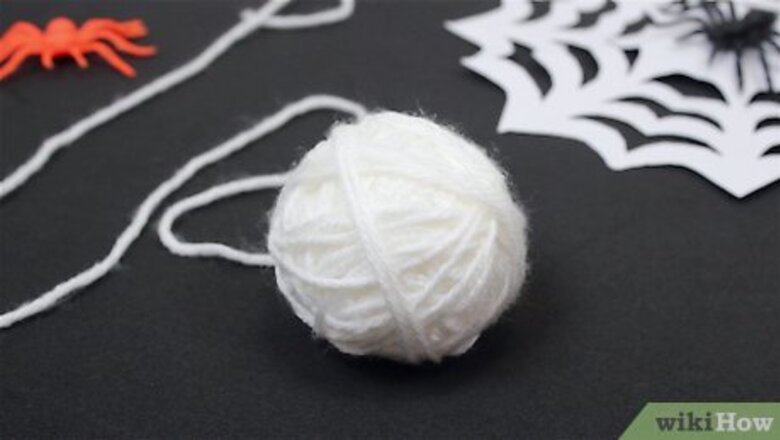
views
Using Yarn
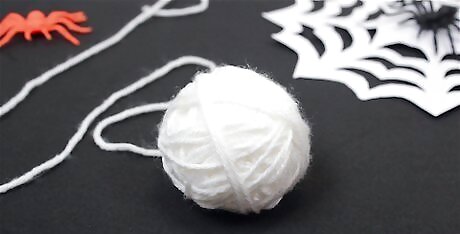
Prepare your materials. Determine and measure where you will be placing your spider web so you know what size yarn to cut. Remember the wider the point, the larger your web. Any color will do but white or silver are more traditional colors.
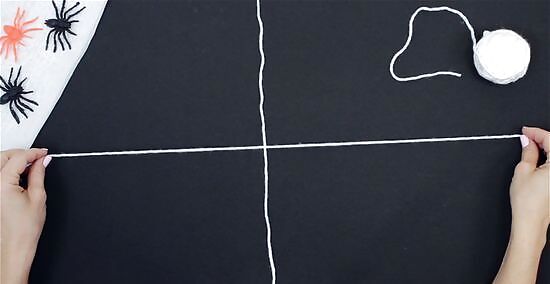
Cut pieces of yarn and secure the frame. Cut two pieces to form one vertical length of yarn and one horizontal length which will meet in the center to become the frame of your web. The length of each piece of string will depend on where you will be hanging it, so measure the string based on the location. For example, if you want to hang the web from one tree to another, the area between the trees will define the length of the frame of the web. Alternatively, if your web is being hung on the front door, the width of the door is your limit. You can tape to the wall or tie off to nails in the wall to secure the framework.

Add more framework strands. Tie a string from one corner of the frame to the middle of the circle. Complete this for each corner, then the web will have eight spokes (framework threads). Eight spokes should be sufficient but you can always add more at a later time if needed.

Weave the strands of the web. Start from the center (where the vertical and horizontal pieces criss-cross) and weave the yarn around in a spiral shape. Each time you come to a supporting string, tie your yarn into an overhand knot to secure the shape of the web. Leave plenty of space between each capture thread layer to give the effect of the space that you see on a real web. If you run out of a length of string, simply tie it off, tie on a new piece, and keep weaving. Make sure the strings are taut to avoid drooping.

Clean up loose ends. Cut off or tighten loose pieces and generally tidy up the web as needed. The web is complete when you've finished weaving enough of the spiral to reach the edge of the frame. If you need to strengthen parts of the web that might be affected by cutting off loose ends or knots, use hot glue. Hot glue is not only fast but it works well on fabrics and woods.
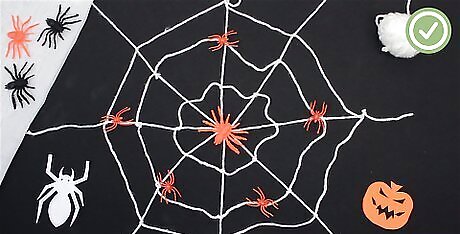
Add spiders. Use store-bought plastic or furry spider toys, or make your own from pipe cleaners or similar items.
Using Pipe Cleaners (Chenille)
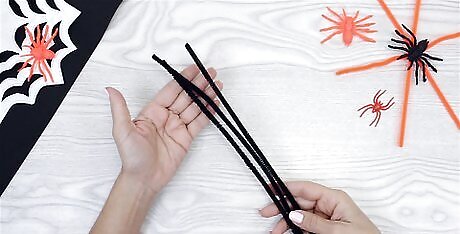
Gather three white or black pipe cleaners for each web. Pipe cleaners are pliable wires that are covered in fluffy fabric. You can try other colors if you're feeling adventurous. Pipe cleaners can be found at local arts and crafts stores like Michael's or Hobby Lobby.
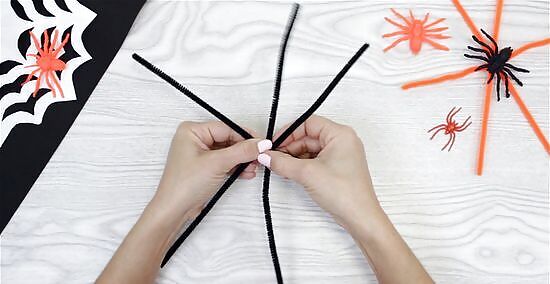
Form the frame of your web. Twist two pipe cleaners together at the exact center of each stick to form an "X". Twist the third pipe cleaner down the center of the "X", creating what looks like a snowflake shape. The sticks should be spread out in a circle, leaving even gaps between each stick. This forms the web framework. If you are having trouble twisting the pipe cleaners together, you can use hot glue instead.
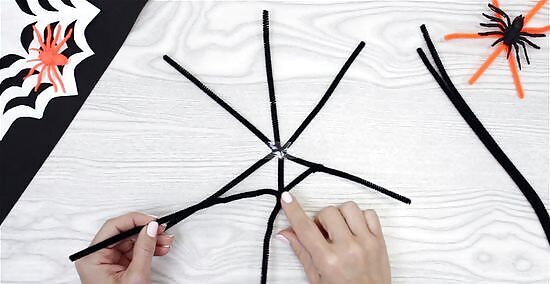
Create the strands of your web. Twist on a new pipe cleaner about an inch (2.5cm) from where the sticks all join. This starts the capture web which you'll be weaving around the framework.
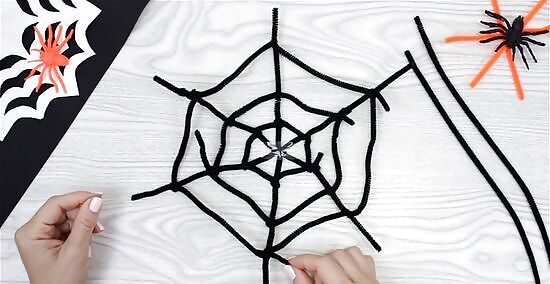
Weave the pipe cleaner around the framework of the web. Each time you reach a framework thread, twist or loop the capture thread around it once to secure it. Avoid pulling on the pipe cleaners as it can remove some of the tuft surrounding the wire. Continue weaving in this manner to create the spiral. Each time a capture thread runs out, simply wind on a new thread in the spot where the last thread left off and keep weaving.
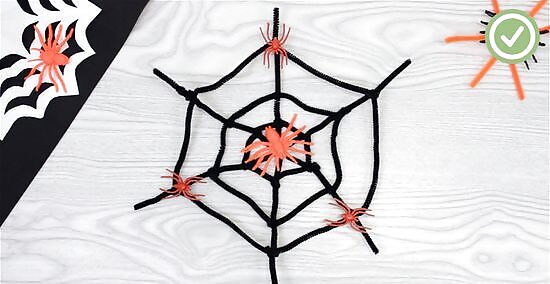
Finish the web. After winding the last strand, trim loose ends using sharp scissors. There are two choices for finishing the web: Leave a bit of the threads from the framework extending beyond the capture thread spiral––this looks jagged and is typical of the cartoon style caricature of spider webs. Weave a capture thread as a border on the edge of the framework. This looks neat and finished, like a tidy spider worked there.
Using Doilies
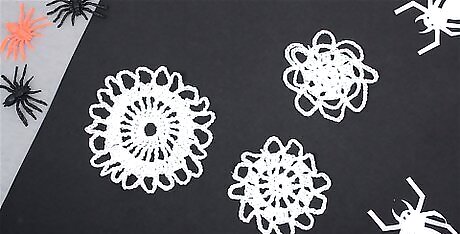
Choose suitable doilies. Doilies are crocheted cotton put into round patterns with a lot of open space--just like spiderwebs. If it's possible to be picky, choose ones that look more web-like but don't fuss too much. You can find doilies among old belongings, at your local thrift store, and at your local arts and crafts store. Wash and dry the doilies if they are used or old.
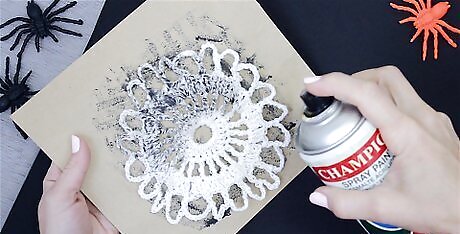
Spray paint the doilies black (if not black already). Lay the doilies flat and spray with the black paint, passing over several times for complete color. Allow to dry, then repeat on the other side. Hang to dry when complete. Choose a spot with open ventilation and cover the work surface with cardboard or newspaper to prevent staining the surface underneath.
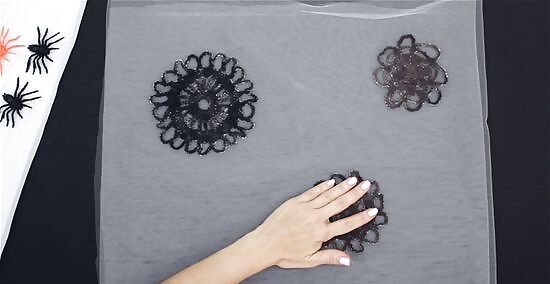
Attach doilies to a backdrop such as a transparent curtain or piece of cloth like a sheet. Space the doilies at an acceptable distance from each other to give the impression of different spiders weaving their webs. Tack in place with black thread or hot glue. Apply as many as will fit nicely.
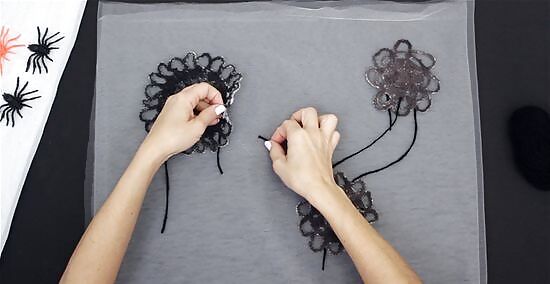
Add the illusion of loose web strands. Tie one end of black embroidery thread to the back of one doily. Thread this on the curtain from one web to the next. Don't overdo this--just a few strands here and there will give the effect of loose webs.
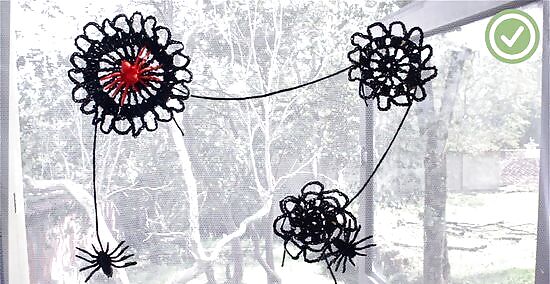
Hang the curtain. Use some of the embroidery thread to hold the curtain in place as if spiders have tied up the curtain while they were weaving. Hang over a good light source, like a window or anyplace like a skylight or a screen with a light behind it.
Using Cheesecloth

Obtain cheesecloth. Cheesecloth is a very loose cotton that resembles gauze. You can find it in craft stores like Jo-Ann Fabric or Bed Bath and Beyond.
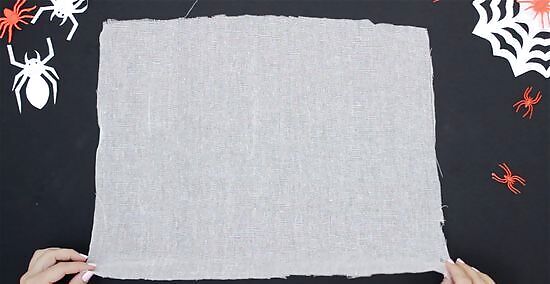
Measure and secure the cheesecloth. Measure the area where you will be hanging the web and measure and cut the cheesecloth accordingly. Secure the cheesecloth in place with pins or glue.
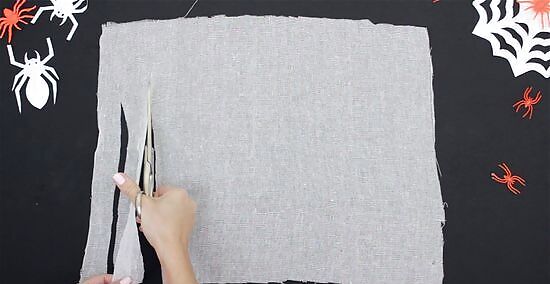
Cut vertical strips in the cloth. Remember, the web is meant to look old and unfinished so vary the lengths and spacing of the vertical strips. Cut from the bottom up.
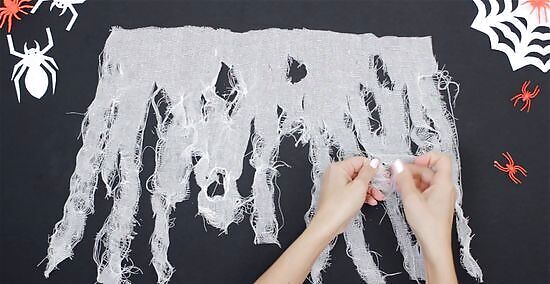
Tear the fabric. Create a messy web by snipping, tearing, and making holes in each vertical strip. The more it unravels, the better.
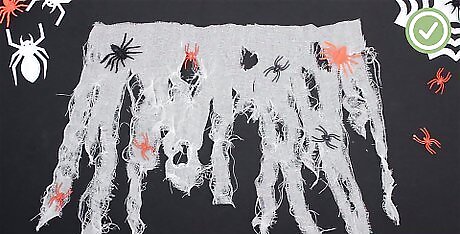
Put on the finishing touches. Rub the ends of the cloth between your hands to fray the edges and glue in fake spiders as needed.



















Comments
0 comment